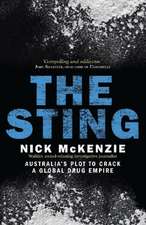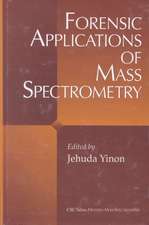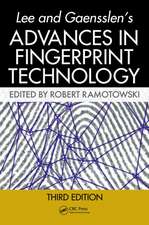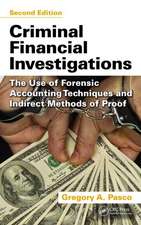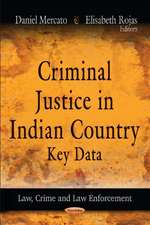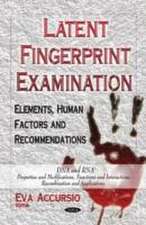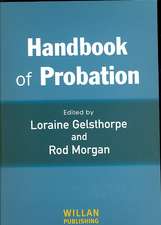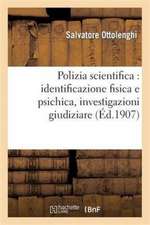Forensic Identification and Criminal Justice
Autor Carole McCartneyen Limba Engleză Hardback – iul 2006
This book uncovers the way in which this new reliance on forensic technologies has gained a foothold within the criminal justice system, and the risks and dangers that this can pose. The National DNA Database provides a particular focus of attention. The author seeks to move beyond an approach that has seen forensic DNA profiling as error free, situating her analysis within broader risk discourses.
| Toate formatele și edițiile | Preț | Express |
|---|---|---|
| Paperback (1) | 384.04 lei 3-5 săpt. | +22.49 lei 7-13 zile |
| Taylor & Francis – 17 mai 2012 | 384.04 lei 3-5 săpt. | +22.49 lei 7-13 zile |
| Hardback (1) | 1168.06 lei 6-8 săpt. | |
| Taylor & Francis – iul 2006 | 1168.06 lei 6-8 săpt. |
Preț: 1168.06 lei
Preț vechi: 1424.46 lei
-18% Nou
223.50€ • 233.99$ • 184.94£
Carte tipărită la comandă
Livrare economică 05-19 aprilie
Specificații
ISBN-10: 1843921847
Pagini: 272
Dimensiuni: 156 x 234 x 23 mm
Greutate: 0.58 kg
Ediția:1
Editura: Taylor & Francis
Colecția Willan
Locul publicării:Oxford, United Kingdom
Public țintă
Postgraduate and UndergraduateCuprins
Introduction 1. Forensic identification: the legal framework. Police investigations and forensic identity evidence. Fingerprints and DNA sampling: the legal framework 2. Forensic identification: the criminal investigation. DNA and police investigations. The DNA Expansion Programme. DNA and criminal detection rates. Forensic science and criminal investigation: a case for caution?. Conclusion: forensic identification and the criminal process 3. Forensic identification: the criminal trial. The criminal trial: fairness or truth?. Identity 'matches': acceptance of fingerprint and DNA evidence. The criminal trial: certainty and rectitude. Conclusion: forensic identification and the criminal trial. Forensic identification and criminal justice 4. The development of forensic identity databases. The development of forensic identity databases. Fingerprint databasing. A sceptical approach to forensic identity databases. Forensic identity databases: some new risks. Forensic identity databases: current problems, future risks. Conclusion: the endangerment of innocence in the pursuit of security 5. Forensic identification in other jurisdictions. Europe Pan-European developments. Interpol USA Canada New Zealand and Australia. Conclusion: England and Wales - leading the way? 6. The future of forensic identification: issues and prospects. Fingerprints and DNA in the 'fight against crime'. Future applications for forensic identification technologies. Forensic identification: human rights and civil liberties. Forensic identity databases: issues and prospects. The 'infallibility' of forensic identification. The information society: heading for 'information overload'?. Conclusion: Cause for optimism, pessimism, or scepticism?
Notă biografică
Carole McCartney is a Senior Lecturer in the School of Law, Leeds University. Her research interests include Australian justice, innocence projects, and DNA and criminal justice.
Recenzii
Descriere
This book provides an account of the development of forensic identification technologies and the way in which this has impacted upon the legal system. It traces the advent of forensic identification technologies, focusing on fingerprinting and forensic DNA typing, and their growing deployment within the criminal justice system. It also elucidates the ways in which these new technologies are accelerating procedural changes to investigative practices, and shows the ways in which in some areas human rights (such as privacy rights and rights against discrimination) are coming under threat. The use of forensic evidence in criminal investigations and trials is analysed in detail.
This book uncovers the way in which this new reliance on forensic technologies has gained a foothold within the criminal justice system, and the risks and dangers that this can pose. The National DNA Database provides a particular focus of attention. The author seeks to move beyond an approach that has seen forensic DNA profiling as error free, situating her analysis within broader risk discourses.








